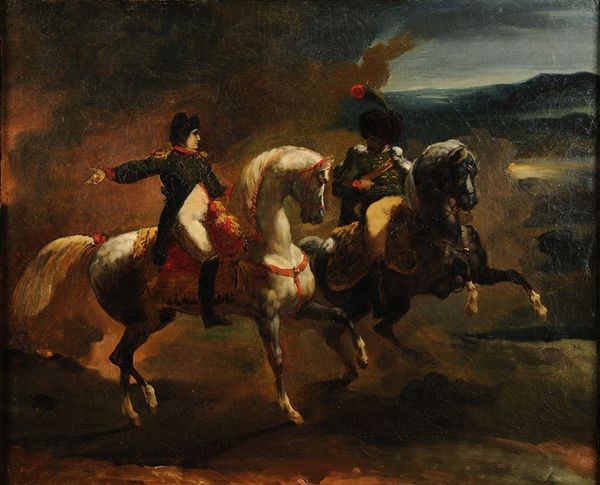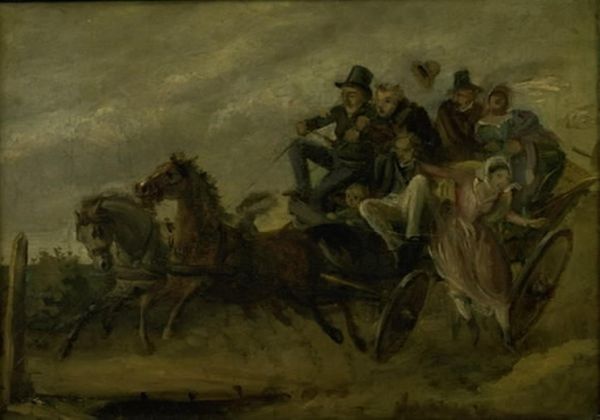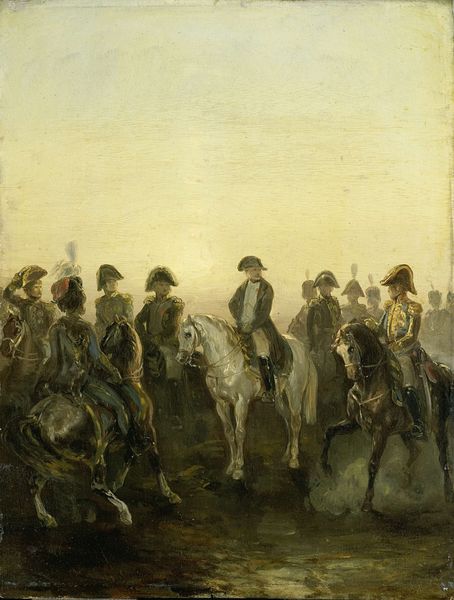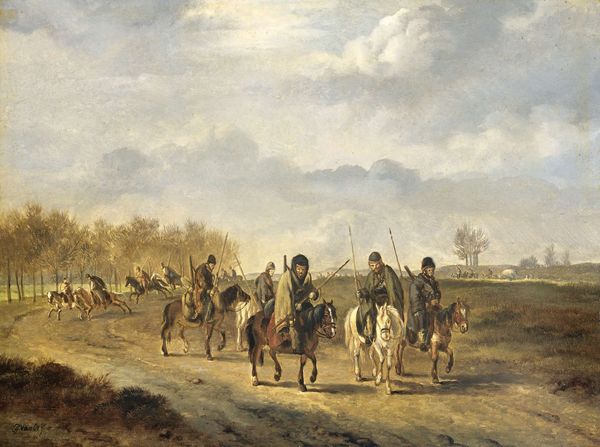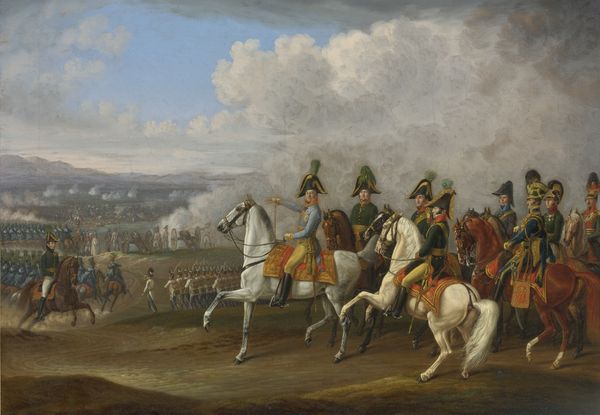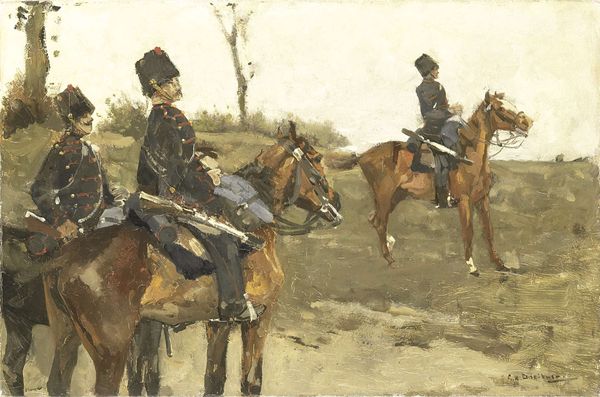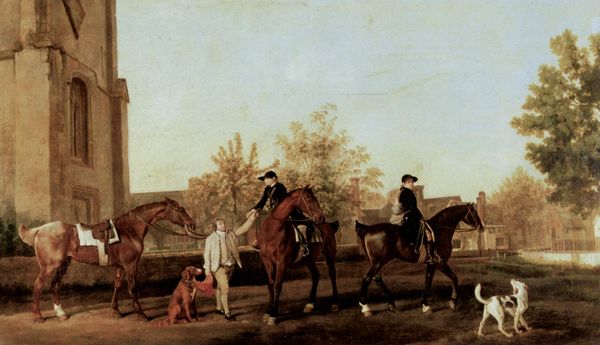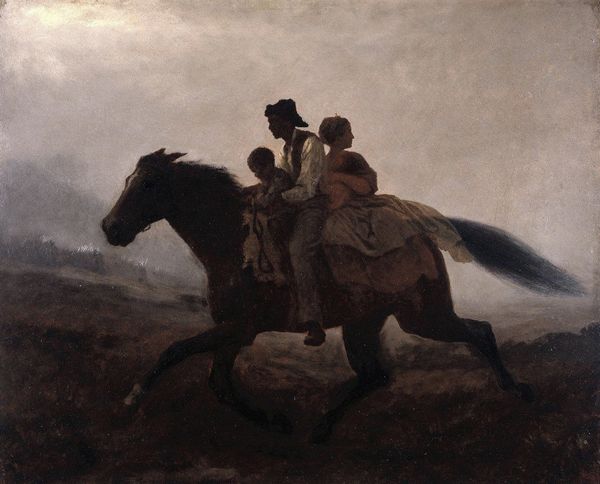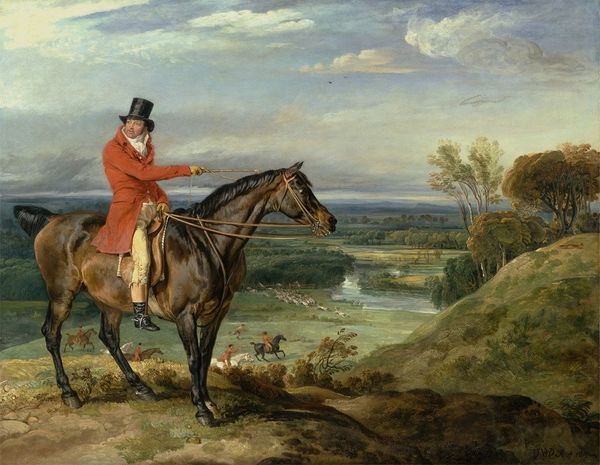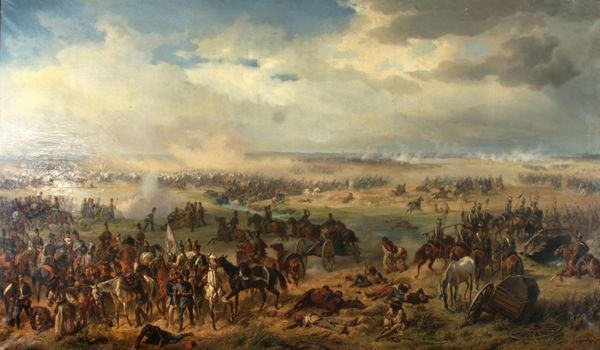
painting, oil-paint
#
portrait
#
figurative
#
painting
#
oil-paint
#
landscape
#
figuration
#
oil painting
#
romanticism
#
history-painting
#
academic-art
Copyright: Public Domain: Artvee
Curator: What a powerful piece! The way Vernet depicts Napoleon, he seems almost separate from the thick of battle, a little removed. Editor: My first impression? Dusty. And slightly…melancholy. Like a faded photograph from a glory we only dimly remember. Curator: Indeed. What you are sensing there, in the landscape and in the pose, invites considering Romanticism. This work, likely produced between 1810 and 1850, offers us a vision of “Keizer Napoleon I en zijn staf te paard"—that's “Emperor Napoleon I and his Staff on Horseback," for our English speakers. This oil on canvas, in a way, signals a move towards history painting and romanticism simultaneously, where individual genius confronts both opportunity and its limits. Editor: Right, that Romantic bend. The horse, a magnificent animal, but also so… subservient to the rider. And Napoleon himself, not heroically charging, but almost pensively observing. It whispers doubts, doesn't it? I can’t help wondering if there is an underlying critique of power. Curator: I think your read resonates particularly because we're viewing Napoleon through a post-Napoleonic lens. In some ways this artist offers a very clear connection to academic traditions and their relationship to power. Even as we consider the "great man," we see around him also, in the dust, the signs of past glories now turning into burdens. Editor: The unattended helmet in the foreground, that's a striking touch. A little detail that amplifies the painting’s narrative of change and hints at future defeat, future challenges. So, what do you think we're supposed to *feel* looking at this? Curator: I think Vernet invites a complicated mixture of awe and skepticism, or perhaps, acceptance. He positions us to reflect critically on legacies, power, and the weight of history through this depiction of a towering figure. Editor: Yeah. Dust to dust, even for emperors, eh? Looking at this has definitely complicated my Napoleon narratives, that's for sure. Curator: Precisely. It's in that complication where art history begins, where we start seeing a figure anew.
Comments
No comments
Be the first to comment and join the conversation on the ultimate creative platform.
